#monks of new skete
Explore tagged Tumblr posts
Video
youtube
#monks of new skete#marc goldberg#kristi noem#this is the real reason why this whole debacle of so awful#many of these morons will follow suit#yes - she will be reviled by many#but there will be others who will see her as an example#and it's disgusting and shameful#and sad#dogs love us and we are so so lucky that they do
18 notes
·
View notes
Text
"Would you leave your toddler in the car?"
"How could you make that poor dog do roadwork/run on a treadmill?"
"Just leave your dog home. He'll be happier there."
*bonks you over the head with a Monks of New Skete book*
Don't. Throw. The. Baby. With. The. Bath. Water.
#dogblr#dog training#I'm so sick of people acting superior because their dogs are treated like treasured China in a cabinet#your dog is a dog!#let it do dog things#train and socialize it so it can be happy doing dog things#incorporate it in your life as much as you can#and give it appropriate exercise for its breed and age#and you'll be paying so much less to the trainer and enjoying your dog so much more#just because you don't put your dog through unnecessary stress doesn't mean your dog shouldn't be an active partner in your life
34 notes
·
View notes
Text
when my mom was pregnant with me, her first child, she was unsurprisingly gifted a whole bunch of parenting books. my dad had a dog and in a similar situation got puppy and dog training books, as was the fashion in the days before listicles and internet experts.
in a stunning turn of events that explains SO MUCH about me and my siblings, the literature that was most consulted while raising the human children in the family was How to Be Your Dog's Best Friend by the monks of New Skete.
honestly. not the worst. it could have been a bible. or idk. the user manual for the washing machine since Mom seemed to be picking up random books to glean parenting advice from.
38 notes
·
View notes
Text
SAINTS&READING: THURSDAY, MARCH 27, 2025
Fourth Week of the Great Lent: Adoration of Cross. By Monastic Charter: Food without Oil
SAINT BENEDICT OF NURSIA, ABBOT (543)

Saint Benedict, founder of Western monasticism, was born in the Italian city of Nursia in the year 480. When he was fourteen years of age, the saint’s parents sent him to Rome to study. Unsettled by the immorality around him, he decided to devote himself to a different sort of life.
At first Saint Benedict settled near the church of the holy Apostle Peter in the village of Effedum, but news of his ascetic life compelled him to go farther into the mountains. There he encountered the hermit Romanus, who tonsured him into monasticism and directed him to live in a remote cave at Subiaco. From time to time, the hermit would bring him food.
For three years the saint waged a harsh struggle with temptations and conquered them. People soon began to gather to him, thirsting to live under his guidance. The number of disciples grew so much, that the saint divided them into twelve communities. Each community was comprised of twelve monks and was a separate skete. The saint gave each skete an igumen from among his experienced disciples, and only the novice monks remained with Saint Benedict for instruction.
The strict monastic Rule Saint Benedict established for the monks was not accepted by everyone, and more than once he was criticized and abused by dissenters.
Finally he settled in Campagna and on Mount Cassino he founded the Monte Cassino monastery, which for a long time was a center of theological education for the Western Church. The monastery possessed a remarkable library. Saint Benedict wrote his Rule, based on the experience of life of the Eastern desert-dwellers and the precepts of Saint John Cassian the Roman (February 29).
The Rule of Saint Benedict dominated Western monasticism for centuries (by the year 1595 it had appeared in more than 100 editions). The Rule prescribed the renunciation of personal possessions, as well as unconditional obedience, and constant work. It was considered the duty of older monks to teach the younger and to copy ancient manuscripts. This helped to preserve many memorable writings from the first centuries of Christianity.
Every new monk was required to live as a novice for a year, to learn the monastic Rule and to become acclimated to monastic life. Every deed required a blessing. The head of this cenobitic monastery is the igumen. He discerns, teaches, and explains. The igumen solicits the advice of the older, experienced brethren, but he makes the final decisions. Keeping the monastic Rule was strictly binding for everyone and was regarded as an important step on the way to perfection.
Saint Benedict was granted by the Lord the gift of foresight and wonderworking. He healed many by his prayers. The monk foretold the day of his death in 547. The main source for his Life is the second Dialogue of Saint Gregory.
Saint Benedict’s sister, Saint Scholastica (February 10), also became famous for her strict ascetic life and was numbered among the saints.
SAINT ROSTILAV-MICHAEL PRINCE OF KIEV (1167)

Saint Rostislav-Michael, Great Prince of Kiev, was the son of the Kievan Great Prince Saint Mstislav the Great (June 14), and the brother of holy Prince Vsevolod-Gabriel (February 11, April 22, and November 27). He was one of the great civil and churchly figures of the mid-twelfth century.
His name is connected with the fortification and rise of Smolensk, and both the Smolensk principality and the Smolensk diocese.
Up until the twelfth century the Smolensk land was part of the Kievan realm. The beginning of its political separation took place in the year 1125, when holy Prince Mstislav the Great, gave Smolensk to his son Rostislav (in Baptism Michael) as an inheritance from his father, the Kievan Great Prince Vladimir Monomakh. Thanks to the work and efforts of Saint Rostislav, the Smolensk principality, which he ruled for more than forty years, expanded and was built up with cities and villages, adorned with churches and monasteries, and became influential in Russian affairs.
Saint Rostislav founded the cities of Rostislavl, Mstislavl, Krichev, Propoisk, and Vasiliev among others. He was the forefather of the Smolensk princely dynasty.
In 1136 Saint Rostislav succeeded in establishing a separate Smolensk diocese. Its first bishop was Manuel, installed between March-May of 1136 by Metropolitan Michael of Kiev. Prince Rostislav issued an edict in the city of Smolensk assuring Bishop Manuel that he would provide him with whatever he needed. On September 30, 1150 Saint Rostislav also ceded Cathedral Hill at Smolensk to the Smolensk diocese, where the Dormition cathedral and other diocesan buildings stood.
Contemporaries thought highly of the church construction of Prince Rostislav. Even the sources that are inclined to report nothing more about it note that “this prince built the church of the Theotokos at Smolensk.” The Dormition cathedral, originally built by his grandfather, Vladimir Monomakh, in the year 1101 was rebuilt and expanded under Prince Rostislav. The rebuilt cathedral was consecrated by Bishop Manuel on the Feast of the Dormition, August 15, 1150. Prince Rostislav was a “builder of the Church” in a far wider sense: he endowed the Smolensk Dormition church of the Mother of God, and transformed it from a city cathedral into the ecclesiastical center of the vast Smolensk diocese.
Holy Prince Rostislav was the builder of the Smolensk Kremlin, and of the Savior cathedral at the Smyadynsk Boris and Gleb monastery, founded on the place of the murder of holy Prince Gleb (September 5). Later his son David, possibly fulfilling the wishes of his father, transferred the old wooden coffins of Saints Boris and Gleb from Kievan Vyshgorod to Smyadyn.
In the decade of the fifties of the twelfth century, Saint Rostislav was drawn into a prolonged struggle for Kiev, which involved representatives of the two strongest princely lines: the Olgovichi and the Monomakhovichi.
On the Monomakhovichi side the major contender to be Great Prince was Rostislav’s uncle, Yurii Dolgoruky. Rostislav, as Prince of Smolensk, was one of the most powerful rulers of the Russian land and had a decisive voice in military and diplomatic negotiations.
For everyone involved in the dispute, Rostislav was both a dangerous opponent and a desired ally, and he was at the center of events. This had a providential significance, since Saint Rostislav distinguished himself by his wisdom regarding the civil realm, by his strict sense of justice and unconditional obedience to elders, and by his deep respect for the Church and its hierarchy. For several generations he was the bearer of the “Russkaya Pravda” (“Russian Truth”) and of Russian propriety.
After the death of his brother Izyaslav (November 13, 1154), Saint Rostislav became Great Prince of Kiev, but he ruled Kiev at the same time with his uncle Vyacheslav Vladimirovich. After the latter’s death, Rostislav returned to Smolensk, ceding the Kiev princedom to his other uncle, Yurii Dolgoruky, and he removed himself from the bloodshed of the princely disputes. He occupied Kiev a second time on April 12, 1159 and he then remained Great Prince until his death (+ 1167). More than once, he had to defend his paternal inheritance with sword in hand.
The years of Saint Rostislav’s rule occurred during one of the most complicated periods in the history of the Russian Church. The elder brother of Rostislav, Izyaslav Mstislavich, a proponent of the autocephaly of the Russian Church, favored the erudite Russian monk Clement Smolyatich for Metropolitan, and wanted him to be made Metropolitan by a council of Russian bishops, without seeking the usual approval from the Patriarch of Constantinople. This occurred in the year 1147.
The Russian hierarchy basically supported Metropolitan Clement and Prince Izyaslav in their struggle for ecclesiastical independence from Constantinople, but several bishops headed by Saint Niphon of Novgorod (April 8), did not recognize the autocephaly of the Russian metropolitanate and shunned communion with it, having transformed their dioceses into independent ecclesial districts, pending the resolution of this question. Bishop Manuel of Smolensk also followed this course. Saint Rostislav understood the danger which lay hidden beneath the idea of Russian autocephaly for these times, which threatened the break-up of Rus. The constant fighting over Kiev among the princes might also lead to a similar fight over the Kievan See among numerous contenders, put forth by one princely group or another.
The premonitions of Saint Rostislav were fully justified. Yurii Dolgoruky, who remained loyal to Constantinople, occupied Kiev in the year 1154. He immediately banished Metropolitan Clement and petitioned Constantinople for a new Metropolitan. This was to be Saint Constantine (June 5), but he arrived in Rus only in the year 1156, six months before the death of Yurii Dolgoruky (+ May 15, 1157). Six months later, when Saint Rostislav’s nephew Mstislav Izyaslavich entered the city on December 22, 1157, Saint Constanine was obliged to flee Kiev, while the deposed Clement Smolyatich returned as Metropolitan. Then a time of disorder began in Russia, for there were two Metropolitans.
All the hierarchy and the clergy came under interdict: the Greek Metropolitan suspended the Russian supporters of Clement, and Clement suspended all the supporters of Constantine. To halt the scandal, Saint Rostislav and Mstislav decided to remove both Metropolitans and petition the Patriarch of Constantinople to appoint a new archpastor for the Russian metropolitan See.
But this compromise did not end the matter. Arriving in Kiev in the autumn of 1161, Metropolitan Theodore died in spring of the following year. Following the example of Saint Andrew Bogoliubsky (July 4), who supported his own fellow ascetic Bishop Theodore to be Metropolitan, Saint Rostislav put forth his own candidate, who turned out to be the much-suffering Clement Smolyatich.
The fact that the Great Prince had changed his attitude toward Metropolitan Clement, shows the influence of the Kiev Caves monastery, and in particular of Archimandrite Polycarp. Archimandrite Polycarp, who followed the traditions of the Caves (in 1165 he became head of the monastery), was personally very close to Saint Rostislav.
Saint Rostislav had the pious custom of inviting the igumen and twelve monks to his own table on the Saturdays and Sundays of Great Lent, and he served them himself. The prince more than once expressed the wish to be tonsured a monk at the monastery of Saints Anthony and Theodosius, and he even gave orders to build a cell for him.
The monks of the Caves, a tremendous spiritual influence in ancient Rus, encouraged the prince to think about the independence of the Russian Church. Moreover, during those years in Rus, there was suspicion regarding the Orthodoxy of the bishops which came from among the Greeks, because of the notorious “Dispute about the Fasts” (the “Leontian Heresy”). Saint Rostislav’s pious intent to obtain the blessing of the Patriarch of Constantinople for Metropolitan Clement came to naught. The Greeks believed that appointing a Metropolitan to the Kiev cathedra was one of their most important prerogatives. This served not only the ecclesiastical, but also the political interests of the Byzantine Empire.
In 1165 a new Greek Metropolitan arrived at Kiev, John IV, and Saint Rostislav accepted him out of humility and churchly obedience. The new Metropolitan, like his predecessor, governed the Russian Church for less than a year (+ 1166). The See of Kiev was again left vacant, and the Great Prince was deprived of the fatherly counsel and spiritual wisdom of a Metropolitan. His sole spiritual solace was the igumen Polycarp and the holy Elders of the Kiev Caves monastery and the Theodorov monastery at Kiev, which had been founded under his father.
Returning from a campaign against Novgorod in the spring of 1167, Saint Rostislav fell ill. When he reached Smolensk, where his son Roman was prince, relatives urged him to remain at Smolensk. But the Great Prince gave orders to take him to Kiev. “If I die along the way,” he declared, “put me in my father’s monastery of Saint Theodore. If God should heal me, through the prayers of His All-Pure Mother and Saint Theodosius, I shall take vows at the monastery of the Caves.”
God did not fulfill Saint Rostislav’s last wish to end his life as a monk of the holy monastery. The holy prince died on the way to Kiev on March 14, 1167. (In other historical sources the year is given as 1168). His body, in accord with his last wishes, was brought to the Kiev Theodosiev monastery.
Source: Orthodox Church in America_OCA


Isaiah 28:14-22
14 Therefore hear the word of the Lord, you scornful men, Who rule this people who are in Jerusalem, 15 Because you have said, “We have made a covenant with death, And with Sheol we are in agreement. When the overflowing scourge passes through, It will not come to us, For we have made lies our refuge, And under falsehood we have hidden ourselves.” 16 Therefore thus says the Lord God: “Behold, I lay in Zion a stone for a foundation, A tried stone, a precious cornerstone, a sure foundation; Whoever believes will not act hastily. 17 Also I will make justice the measuring line, And righteousness the plummet; The hail will sweep away the refuge of lies, And the waters will overflow the hiding place. 18 Your covenant with death will be annulled, And your agreement with Sheol will not stand; When the overflowing scourge passes through, Then you will be trampled down by it. 19 As often as it goes out it will take you; For morning by morning it will pass over, And by day and by night; It will be a terror just to understand the report.” 20 For the bed is too short to stretch out on, And the covering so narrow that one cannot wrap himself in it. 21 For the Lord will rise up as at Mount Perazim, He will be angry as in the Valley of Gibeon— That He may do His work, His awesome work, And bring to pass His act, His unusual act. 22 Now therefore, do not be mockers, Lest your bonds be made strong; For I have heard from the Lord God of hosts, A destruction determined even upon the whole earth.
Proverbs 13:19-14:6
19A desire accomplished is sweet to the soul, But it is an abomination to fools to depart from evil. 20 He who walks with wise men will be wise, But the companion of fools will be destroyed. 21 Evil pursues sinners, But to the righteous, good shall be repaid. 22 A good man leaves an inheritance to his children’s children, But the wealth of the sinner is stored up for the righteous. 23 Much food is in the fallow ground of the poor, And for lack of justice there is waste. 24 He who spares his rod hates his son, But he who loves him disciplines him promptly. 25 The righteous eats to the satisfying of his soul, But the stomach of the wicked shall be in want.
1 The wise woman builds her house, But the foolish pulls it down with her hands. 2 He who walks in his uprightness fears the Lord, But he who is perverse in his ways despises Him. 3 In the mouth of a fool is a rod of pride, But the lips of the wise will preserve them. 4 Where no oxen are, the trough is clean; But much increase comes by the strength of an ox. 5 A faithful witness does not lie, But a false witness will utter lies. 6 A scoffer seeks wisdom and does not find it, But knowledge is easy to him who understands.
#orthodoxy#orthodoxchristianity#easternorthodoxchurch#originofchristianity#gospel#spirituality#holyscriptures#bible#faith#wisdom#saints
4 notes
·
View notes
Text
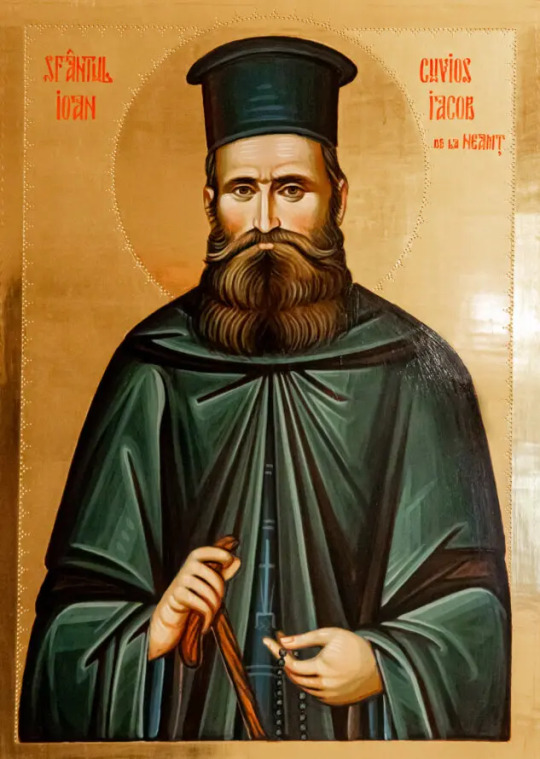
Saint John Jacob of Neamț the New Chozebite
Saint John was born in Botoșani County in 1913. Orphaned at a young age, he was raised by his devout grandmother, who instilled in him a love for the church.
Known as Ilie in his lay life, he was a quiet and studious child who felt the call to monasticism from an early age. He entered Neamț Monastery as a novice, where his initial duties included working in the infirmary and library. He lovingly cared for the elderly and sick monks and assisted the monastery’s pharmacist, Monk Iov Burlacu.
Compelled to complete his military service, the young novice was assigned to work in the infirmary, where he tended to the sick and provided them with spiritual strength.
He then became a monk at Saint Sava Monastery in the Holy Land. One of his many duties there was again in the infirmary. He was sought after by all the sick fathers in the monastery, as well as by pilgrims. Over time, Bedouins also began to seek his care, as he would bandage their wounds, and they called him “Father John the Romanian.” Thus, he became known as the “physician of the monastery.”
After a while, feeling exhausted and yearning for solitude, he received a blessing to withdraw into the desert, where he had as a disciple Father Ioanichie Pârâială, a monk from Buzău. After being ordained to the priesthood and serving a short period as abbot, Saint John withdrew again to a cave near Saint George’s Monastery of Chozeba. A lavra formed around him, eventually numbering over 1,500 monks.
At one point, Father Ioanichie developed bone tuberculosis following an infection in his right hand. Doctors in Jerusalem determined that his hand would have to be amputated, but Saint John washed the wound with herbal teas, bandaged it, and it healed. Sometime later, Father Ioanichie broke the same hand, which Saint John healed for the second time.
On another occasion, a monk was ill and discouraged, so the saint wrote him a few verses and encouraged him not to despair. The ailing monk lived for another two years.
After the saint’s passing, Father Ioanichie witnessed many miracles performed at his spiritual father’s reliquary.
Many healings of the demon-possessed have been recorded at the first Romanian skete named after him, located in Pojorâta.
The saint’s incorrupt relics are housed in the church dedicated to Saint Stephen at Saint George’s Monastery in the Chozeba desert.
#Saint John Jacob#Saint John Jacob of Neamt the New Chozebite#Christianity#Orthodox Christianity#Iconography
2 notes
·
View notes
Text
At one time the monks of New Skete cleaned up the area where the bones of the reposed fathers were kept. An elder, by the name of Daniel, who lived in the fort of the skete and served everyone with no complaints once while helping on the clean-up team addressed the reposed saying: "You struggled while living on the earth so you have received your laurels and found your place in heaven. Pray for us holy fathers!"
Then a voice was heard coming from the heap of bones:
"You must have love. No one can be saved without having love."

0 notes
Text
0 notes
Text
Five Essential Dog Training Books Every Pet Owner Must Have

Teaching your pet new skills may be a fun and difficult experience. For a well-mannered dog, having the appropriate supplies on hand is essential, regardless of experience level. The following five dog training books are essential reading for every pet owner:
1. "The Art of Raising a Puppy" by The Monks of New Skete
This timeless tradition gives realistic recommendations on elevating and socializing puppies, as well as covering all the bases in obedience.
2. "Don't Shoot the Dog!: The New Art of Teaching and Training" by Karen Pryor
Discover the principles of training, including how to apply high-quality reward and how to appropriately apply it to mold your dog's behavior.
3. "The Power of Positive Dog Training" by Pat Miller
Find out why using effective reinforcement tactics may help and how it can affect the way you communicate with your dog.
4. "How to Behave So Your Dog Behaves" by Dr. Sophia Yin
Dr. Sophia Yin offers helpful guidance on resolving typical educational problems together with perceptive knowledge about dog behavior.
5. "Inside of a Dog: What Dogs See, Smell, and Know" by Alexandra Horowitz
Learn greater about the exciting discipline of canine cognition and get an extra appreciation on your canine's viewpoint.
Whether you want to paint on more hard behavioral troubles together with your canine or simply train primary instructions, those books provide awesome advice for each step of the schooling system.
Read more
#DogTraining #PetCare #PositiveReinforcement #CanineBehavior #DogBooks
0 notes
Text
cyrus was trained by the monks of new skete is giving vigorous skin care routine
gilmore girls - 4.10
0 notes
Text
The Art of Raising a Puppy (Revised Edition)
New Post has been published on https://bestnaturalpetfoodstore.com/the-art-of-raising-a-puppy-revised-edition/
The Art of Raising a Puppy (Revised Edition)
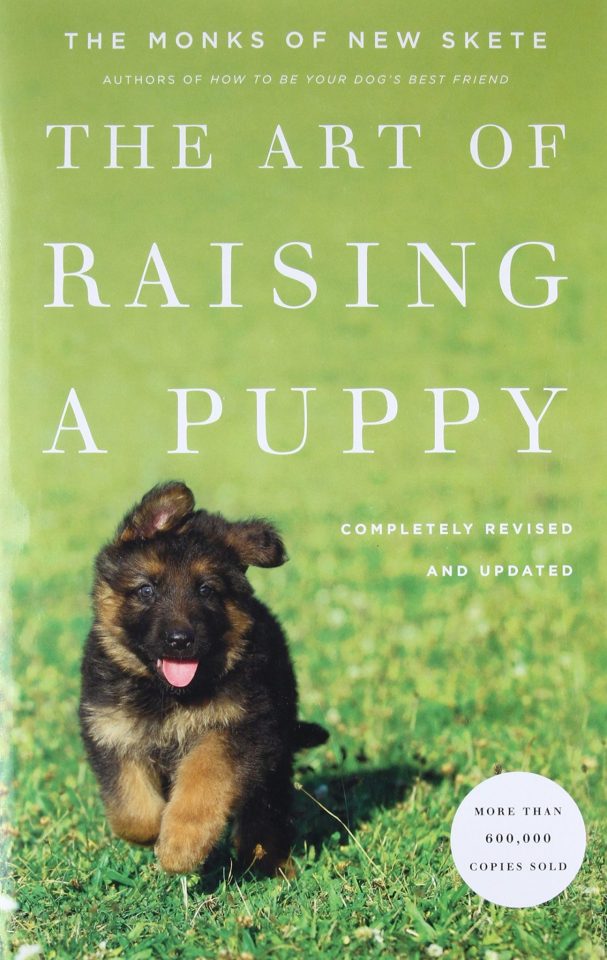
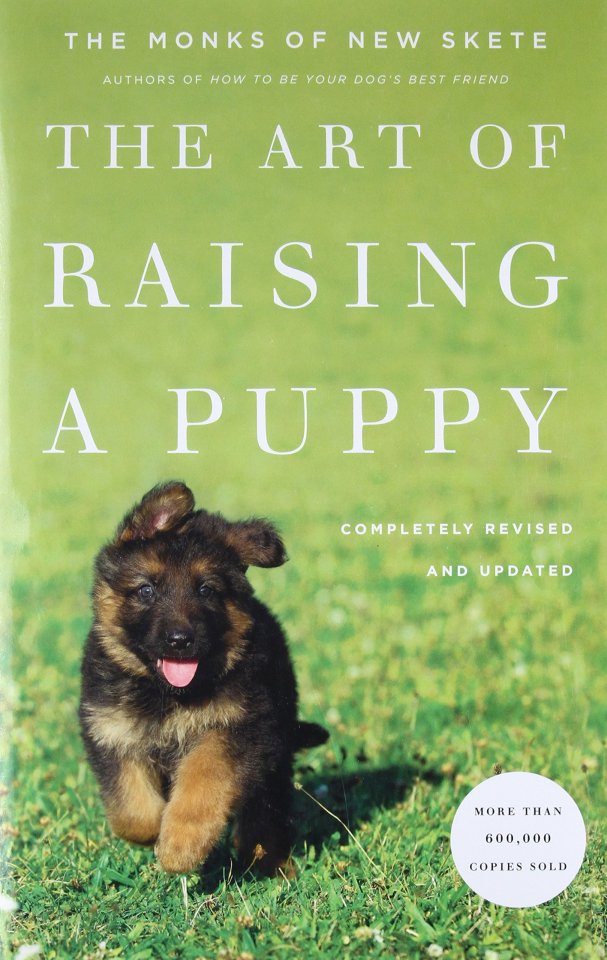
Price: [price_with_discount] (as of [price_update_date] – Details)

The classic bestseller that established the Monks of New Skete as America’s most trusted authorities on dog training, canine behavior, and the animal/human bond, updated to include the latest developments in canine health.
In their two now-classic bestsellers, How to be Your Dog’s Best Friend and The Art of Raising a Puppy, the Monks draw on their experience as long-time breeders of German shepherds and as trainers of dogs of all breeds to provide–brilliantly distilled–the indispensable information and advice that every dog owner needs.
This new edition of The Art of Raising a Puppy features new photographs throughout, along with updated chapters on play, crating, adopting dogs from shelters and rescue organizations, raising dogs in an urban environment, and the latest developments in canine health and canine behavioral theory.
[ad_2]
0 notes
Text
"The Art of Raising a Puppy" by The Monks of New Skete.
The Gravedigger/Quiet Isle vibes. Things seem to be going well with the training. 😆

#sandor inspo#the quiet isle#the gravedigger#the art of raising a puppy#the monks of new skete#asoiaf humor
27 notes
·
View notes
Text
a few weeks ago i wanted to get a puppy i told myself i'd read a few dog training books to see if i still wanted to get a puppy after learning what was involved in training / care i thought it would be too much of a commitment and that i'd see that i wasn't ready for this
on the contrary i now want a dog more than ever
#my plan backfired#i just keep thinking about going on walks with my dog and sitting and watching tv with my dog and getting to pet a dog everyday#nothing else even matters#dogs#puppies#dog training#i blame the monks of new skete
2 notes
·
View notes
Text

Book of the Day
“How to be Your Dog’s Best Friend” by The Monks of New Skete
#how to be your dog’s best friend#the monks of new skete#new skete#dog book#dogs#dog training#animal books#godzilla reads#novels#botd#book of the day#book blog#book blurb#book addict#book aesthetic#book hoarder#bookblogger#booknerd#booklr#booklife#booklover#bookish#bookworm#bibliophile#bibliomania#literature#library#reading#reads
31 notes
·
View notes
Text
ICON, SAINTS&READING: WEDNESDAY, MARCH 19, 2025
march 6_march19
ICON: MOTHER OF GOD, "BLESSED HEAVEN."
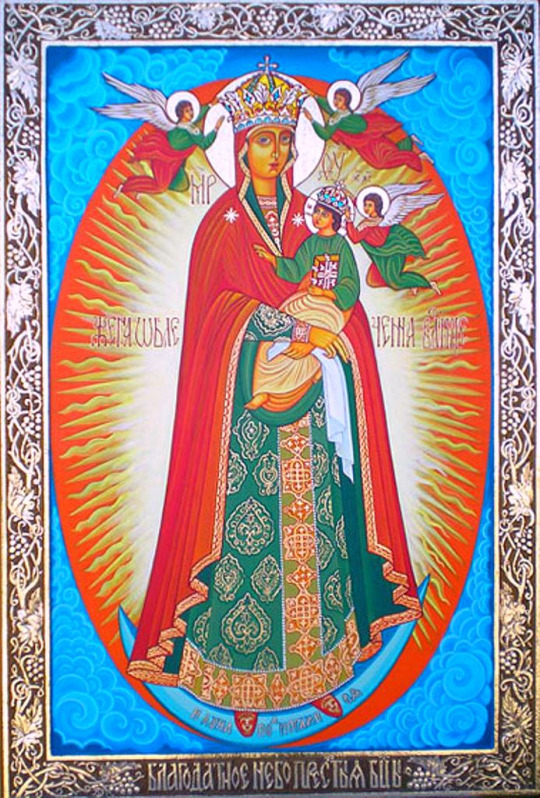
The wonderworking "Blessed Heaven" Icon of the Mother of God, is on the iconostasis of Moscow's Archangel Cathedral in the Kremlin, on the left side of the royal gates.
The Most Holy Theotokos, holding the Pre-Eternal Child in her arms, is depicted in full stature and is surrounded by a bright red mandorla with bright rays emanating from it. This Icon is also known as "What shall we call Thee?" from the Theotokion of the First Hour, inscribed at the edge of the radiance emanating from the Mother of God (see today's Icon and Troparion).
The iconographic depiction of the Most Holy Theotokos, beneath whose feet was a crescent moon, illustrates Saint John's words in the Book of Revelation: "And a great sign appeared in heaven: a woman clothed in the sun, with the moon under her feet, and on her head a crown of twelve stars ... and she brought forth a male child, one who is about to shepherd all the nations with a rod of iron, and her child was caught up to God and to his throne" (Revelation 12:1, 5).
It is said that this Icon was previously in Smolensk, and was brought to Moscow in the XIV century by Sophia, the daughter of the Lithuanian prince Vitovt, when she married Prince Basil of Moscow (1389-1425). Many other ancient icons were sent from Constantinople (according to the record in the Trinity Chronicle for 1398). This Icon became known in 1853 when, during the renovation of the iconostasis of the Archangel Cathedral, Metropolitan Philaret (Drozdov) ordered that historical information be collected concerning the wonderworking Icon. In an inventory of the XVII century (which has not been preserved), it is indicated that the image is a copy of the ancient Icon in the cathedral, made by the masters of the Armory Chamber by decree of Tsar Theodore Alexe'evich.
The "Blessed Heaven" Icon of the Most Holy Theotokos, which is currently on the local row of the iconostasis in Archangel Cathedral, was executed by the royal iconographers during the creation of the new iconostasis in 1678–1680, and was placed in a silver embossed oklad. This was stolen in 1812 the old oklad was replaced by a new one in 1815. In 1916, the wonderworking Icon was adorned with a silver riza, and overlaid silver cherubs in the fields, which has not survived to our time.
The prototype of the iconographic depiction of the Mother of God appeared in Germany in the XV century, and was widely copied in Western art. In the XVII century it spread to Ukraine, Belarus, and Lithuania, and then it came to Russia.
At the beginning of the XX century, with the blessing of Saint John of Kronstadt, a copy of the "Blessed Heaven" Icon was made for the sacristy of the church of the Vaulovsky Dormition Skete in the Romanov - Boris and Glen district in Yaroslavl province. Currently, it is kept in the Resurrection Cathedral in Tutaev, Yaroslavl region.
Another copy of the wonderworking Icon is in the church of Christ's Crucifixion in the Great Palace of the Kremlin.
In the second half of the XIX – early XX century, the Icon's commemoration took place twice a year: on March 6, and on the Sunday of All Saints
VENERABLE ARCADIUS, MONK OF CYPRUS (361)
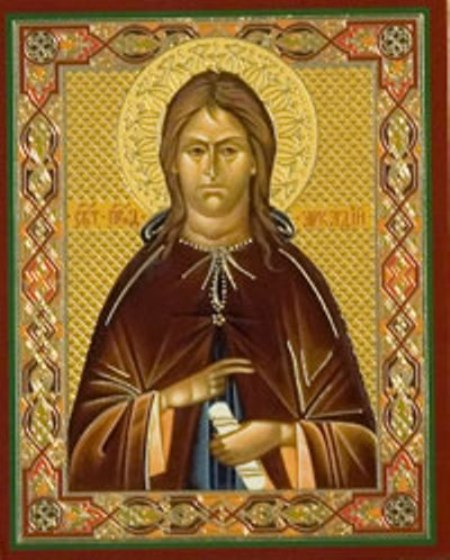
Saint Arcadius from his youth devoted himself to monastic efforts. The saint struggled on the island of Cyprus during the time of the emperor Constantine the Great (306-337). He was the teacher of the holy Martyrs Julian the Physician and Eubolos, executed under Julian the Apostate (361-363). Bewailing the martyric death of his disciples and having consigned their bodies to the earth, Saint Arcadius soon departed to the Lord.
VENERABLE FRIDOLIN, ABBOT ENLIGHTENER OF THE UPPER RHINE (538)
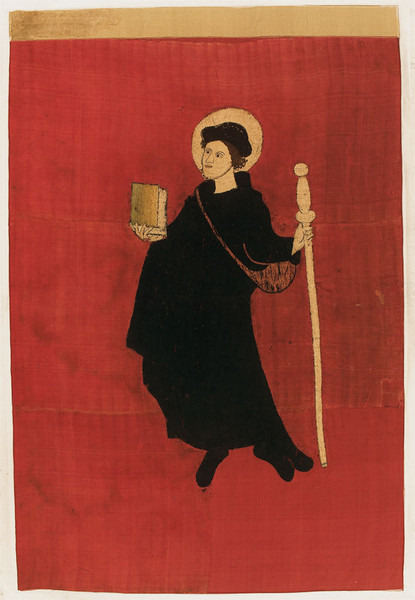
One of the earliest Irish missionaries to the Continent was St Fridolin (Fridolt). At first he was a bishop, who around 500 went via Scotland to Aquitania in Gaul. Fridolin founded a monastery at Poitiers and converted the bishop and people from Arianism to believe in the Trinity. From Poitiers, he went under royal protection to the Vosges and founded the monastery of St Avold. Further monasteries were founded by Fridolin at Chur in Rhaetia and Säckingen in Germany. Everywhere he converted the heathens to the Christian Faith. He is venerated as the Enlightener of the Upper Rhine,
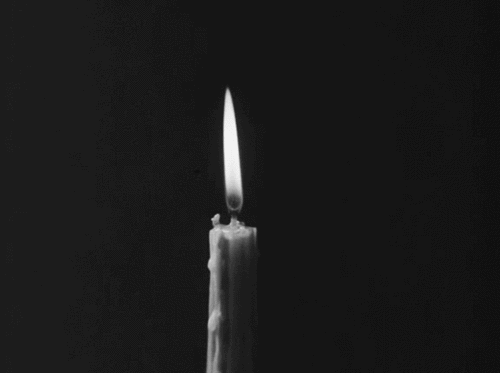

Isaiah 10:12-20
12 Therefore it shall come to pass, when the Lord has performed all His work on Mount Zion and on Jerusalem, that He will say, “I will punish the fruit of the arrogant heart of the king of Assyria, and the glory of his haughty looks.” 13 For he says: “By the strength of my hand I have done it, And by my wisdom, for I am prudent; Also I have removed the boundaries of the people, And have robbed their treasuries; So I have put down the inhabitants like a valiant man. 14 My hand has found like a nest the riches of the people, And as one gathers eggs that are left, I have gathered all the earth; And there was no one who moved his wing, Nor opened his mouth with even a peep.” 15 Shall the ax boast itself against him who chops with it? Or shall the saw exalt itself against him who saws with it? As if a rod could wield itself against those who lift it up, Or as if a staff could lift up, as if it were not wood! 16 Therefore the Lord, the Lord of hosts, Will send leanness among his fat ones; And under his glory He will kindle a burning Like the burning of a fire. 17 So the Light of Israel will be for a fire, And his Holy One for a flame; It will burn and devour His thorns and his briers in one day. 18 And it will consume the glory of his forest and of his fruitful field, Both soul and body; And they will be as when a sick man wastes away. 19 Then the rest of the trees of his forest Will be so few in number That a child may write them. 20 And it shall come to pass in that day That the remnant of Israel, And such as have escaped of the house of Jacob, Will never again depend on him who defeated them, But will depend on the Lord, the Holy One of Israel, in truth.
Proverbs 9:12-18
12 If you are wise, you are wise for yourself, And if you scoff, you will bear it alone.” 13 A foolish woman is clamorous; She is simple, and knows nothing. 14 For she sits at the door of her house, On a seat by the highest places of the city, 15 To call to those who pass by, Who go straight on their way: 16 “Whoever is simple, let him turn in here”; And as for him who lacks understanding, she says to him, 17 “Stolen water is sweet, And bread eaten in secret is pleasant.” 18 But he does not know that the dead are there, That her guests are in the depths of hell.
#orthodoxy#orthodoxchristianity#easternorthodoxchurch#originofchristianity#spirituality#holyscriptures#bible#faith#icon#sacredart#saints
4 notes
·
View notes
Text
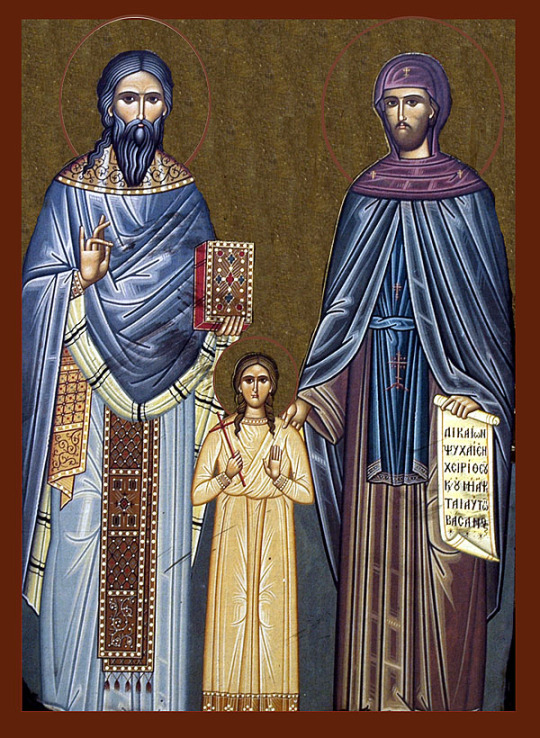
Your holy martyrs O Lord, / through their sufferings have received incorruptible crowns from You, our God. / For having Your strength, they laid low their adversaries, / and shattered the powerless boldness of demons. / Through their intercessions, save our souls!
New Martyrs Raphael, Nicholas, and Irene of Lesbos
Commemorated on April 9
Newly-Appeared Martyrs of Lesbos, Saints Raphael, Nicholas and Irene were martyred by the Turks on Bright Tuesday (April 9, 1463) ten years after the Fall of Constantinople. For nearly 500 years, they were forgotten by the people of Lesbos, but “the righteous Judge... opened the things that were hid” (2 Macc. 12:41).
For centuries the people of Lesbos would go on Bright Tuesday to the ruins of a monastery near Thermi, a village northwest of the capital, Mytilene. As time passed, however, no one could remember the reason for the annual pilgrimage. There was a vague recollection that once there had been a monastery on that spot, and that the monks had been killed by the Turks.
In 1959, a pious man named Angelos Rallis decided to build a chapel near the ruins of the monastery. On July 3 of that year, workmen discovered the relics of Saint Raphael while clearing the ground. Soon, the saints began appearing to various inhabitants of Lesbos and revealed the details of their lives and martyrdom. These accounts form the basis of Photios Kontoglou’s 1962 book A GREAT SIGN (in Greek).
Saint Raphael was born on the island of Ithaka around 1410, and was raised by pious parents. His baptismal name was George, but he was named Raphael when he became a monk. He was ordained to the holy priesthood, and later attained the offices of Archimandrite and Chancellor.
In 1453, Saint Raphael was living in Macedonia with his fellow monastic, the deacon Nicholas, a native of Thessalonica. In 1454, the Turks invaded Thrace, so the two monks fled to the island of Lesbos. They settled in the Monastery of the Nativity of the Theotokos near Thermi, where Saint Raphael became the igumen.
In the spring of 1463, the Turks raided the monastery and captured the monks. They were tortured from Holy Thursday until Bright Tuesday. Saint Raphael was tied to a tree, and the ferocious Turks sawed through his jaw, killing him. Saint Nicholas was also tortured, and he died while witnessing his Elder’s martyrdom. He appeared to people and indicated the spot where his relics were uncovered on June 13, 1960.
Saint Irene was the twelve-year-old daughter of the village mayor, Basil. She and her family had come to the monastery to warn the monks of the invasion. The cruel Hagarenes cut off one of her arms and threw it down in front of her parents. Then the pure virgin was placed in a large earthen cask and a fire was lit under it, suffocating her within. These torments took place before the eyes of her parents, who were also put to death. Her grave and the earthen cask were found on May 12, 1961 after Saints Raphael, Nicholas and Irene had appeared to people and told them where to look.
Others who also received the crown of martyrdom on that day were Saint Irene’s parents Basil and Maria; Theodore, the village teacher; and Eleni, the fifteen-year-old cousin of Saint Irene.
The saints appeared separately and together, telling people that they wished to be remembered. They asked that their icon be painted, that a church service be composed for them, and they indicated the place where their holy relics could be found. Based on the descriptions of those who had seen the saints, the master iconographer Photios Kontoglou painted their icon. The ever-memorable Father Gerasimos of Little Saint Anne Skete on Mt Athos composed their church service.
Many miracles have taken place on Lesbos, and throughout the world. The saints hasten to help those who invoke them, healing the sick, consoling the sorrowful, granting relief from pain, and bringing many unbelievers and impious individuals back to the Church.
Saint Raphael is tall, middle-aged, and has a beard of moderate length. His hair is black with some grey in it. His face is majestic, expressive, and filled with heavenly grace. Saint Nicholas is short and thin, with a small blond beard. He stands before Saint Raphael with great respect. Saint Irene usually appears with a long yellow dress reaching to her feet. Her blonde hair is divided into two braids which rest on either side of her chest.
Saints Raphael, Nicholas, and Irene (and those with them) are also commemorated on Bright Tuesday. Dr. Constantine Cavarnos has given a detailed account of their life, miracles, and spiritual counsels in Volume 10 of his inspirational series Modern Orthodox Saints (Belmont, MA, 1990).
[Text from Orthodox Church in America]
2 notes
·
View notes


